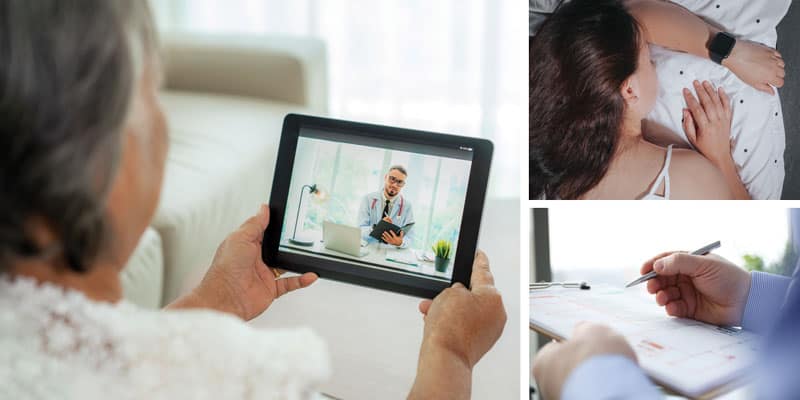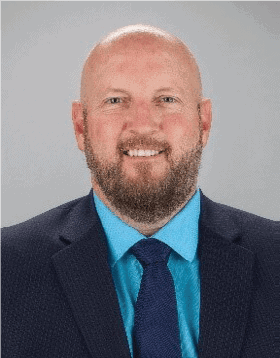Medicare has finalized new policies related to remote patient monitoring for 2021, opening the door for providers to monitor patient treatment outcomes on an ongoing basis. Find out about the new code and possibilities.
 by Randy Curran
by Randy Curran
Have you seen the documentary focused on the thriving wildlife ecosystem in Chernobyl? If you’re too young to remember what happened there, in 1986 an accident occurred at the nuclear reactor in Chernobyl and severe disaster followed, rendering the city uninhabitable by humans. The documentary doesn’t focus on the unspeakable horrors endured by the town’s human citizens. Instead, it centers on the robust biodiverse sanctuary flourishing sans human interference. There are now more wolves in the fallout zone than there are within hundreds of miles outside the fallout zone.
You might be thinking, “Well, that’s great, Randy. Go write for National Geographic. This is Dental Sleep Practice.” 2020 was a tough year, particularly for those of us that own small or medium-sized businesses. Like the wildlife enclave flourishing in what had become a wasteland, there are also long-term positive changes we’ll experience as a result of the COVID catastrophe. As Milton Friedman famously said, “Only a crisis – actual or perceived – produces real change.”
This certainly applies to telemedicine as Medicare and private carriers got behind the importance of patients having access to care whether in person or via virtual platform. This convenience and the insurance coverage for it, are unlikely to disappear any time soon, if at all. We continue to see telemedicine visits covered with consistent reimbursement payments. The coverage and parity laws are actively being discussed in many state legislatures as they seek to lessen burdens on their constituencies (and win votes).
Another lasting silver lining is the rising adoption of wearable technology and remote patient monitoring. You have seen the Fitbit-style wrist bands, the continuous monitoring ring-style pulse oximeters, and the Apple Watch that now tracks oxygen levels. This technology is developing so rapidly that by the time this article is published, there will probably be another 500 products on the market. Of particular interest, Itamar Medical recently acquired the impressive technology of Spry Health.
As someone with sleep apnea and hypertension, I periodically use my recordable pulse ox to ensure I’m doing well on my therapy, but let’s be honest, “periodically” is every 3-4 months. According to my loving wife, who is a Respiratory Therapist in the ICU, I’m not paying enough attention to my own outcome. I should probably listen to her more often (I hope she doesn’t read this).
Now, let’s dig deeper into the real-world applications of these technologies in a dental sleep practice. Some of the most well-known software engineers in our country are committing their brain trust to develop platforms that will enable these innovative devices to automatically communicate results to healthcare providers via cellular networks. This also meets the medical billing requirement stipulating that the data may not be self-reported by the patient with uploads and email transmissions but instead must be digitally reported directly to the provider. Additionally, this will be exceedingly beneficial to set up a system that will identify patients in need of recall appointments with a dashboard view for the clinical staff. It will also be far more efficient and cost-effective.
Medicare has recently rewritten the coding and final rule on remote patient monitoring. On December 1, 2020, the Centers for Medicare and Medicaid Services (CMS) finalized new policies related to remote patient monitoring for 2021. Here’s an excerpt from Medicare’s final ruling update:
“Beyond acknowledging the CPT specification that the medical device supplied for CPT code 99454 must meet the FDA definition of a medical device, we are clarifying that the medical device should digitally (that is, automatically) upload patient physiologic data (that is, data are not patient self-recorded and/or self-reported). We note also that use of the medical device or devices that digitally collect and transmit a patient’s physiologic data must, as usual for most Medicare covered services, be reasonable and necessary for the diagnosis or treatment of the patient’s illness or injury or to improve the functioning of a malformed body member”
One of the great new additions of this rule is that the staff of the provider may monitor the data and work directly with the patient, while allowing the provider to bill for the service and be compensated for delivering a higher level of patient care. This also includes allowing third party services to monitor these patients and report back to the provider.
History has shown that what Medicare does, private insurance usually follows as many private insurers have to play by Medicare’s rules with the Medicare replacement plans they provide. Also, there are already rules in place in 13 states that address some type of remote patient monitoring, and we will see this continue to rise as the topic has the backing of both the American Medical Association and the American Heart Association.
What does all this mean for you? Hopefully you are as excited as I am about the new technology that will improve patient care while efficiently allowing providers to monitor the treatment outcomes on an ongoing basis to ensure their patients are breathing well during their sleep. A little icing on the cake will be the private carriers following Medicare’s lead and consistently reimbursing for this new care paradigm.
Remote patient monitoring codes currently exist. Here are the basics:
99453 – Remote monitoring of physiologic parameter(s) (eg, weight, blood pressure, pulse oximetry, respiratory flow rate), initial; set-up and patient education on use of equipment
99091 – Collection and interpretation of physiologic data (eg, ECG, blood pressure, glucose monitoring) digitally stored and/or transmitted by the patient and/or caregiver to the physician or other qualified health care professional, qualified by education, training, licensure/regulation (when applicable) requiring a minimum of 30 minutes of time, each 30 days
99454 – Remote monitoring of physiologic parameter(s) (eg, weight, blood pressure, pulse oximetry, respiratory flow rate), initial; device(s) supply with daily recording(s) or programmed alert(s) transmission, each 30 days
99457 – Remote physiologic monitoring treatment management services, clinical staff/physician/other qualified health care professional time in a calendar month requiring interactive communication with the patient/caregiver during the month; first 20 minutes
99458 – Remote physiologic monitoring treatment management services, clinical staff/physician/other qualified health care professional time in a calendar month requiring interactive communication with the patient/caregiver during the month; each additional 20 minutes (List separately in addition to code for primary procedure)
What should you do after reading this article? Find a device that does the following:
- Continuously monitors your patient’s oxygen levels during sleep
- Transmits the data back to you directly via cellular method without requiring the patient to upload and email the report.
- Provides a software dashboard to easily track patients.
Once you identify the device that is a good fit for your practice, give the next 5-10 patients the device and then follow the protocols for setup and monitoring. Bill the set-up code right away to the insurance carrier, and then the collection of data, monitoring and patient engagement codes to the insurance carrier after you have gathered and reviewed the results with your patient. Our company, Pristine Medical Billing will be billing this first round of test patients free of charge for our clients.
This coverage is very new, and Medicare has just released the new final rule, so be patient with the process while the private insurance carriers start to come on board. The only way we ever truly know the results with these new parameters as a dental practice, is to dive in and start billing it to the carriers.
Chernobyl. Thriving wolf populations. Telemedicine. Remote patient monitoring and new codes. Just another day at the office.
Learn more about remote patient monitoring and its interaction with telemedicine at https://dentalsleeppractice.com/ce-articles/telemedicine-its-about-time/. Take the quiz and receive CE credits too!
 Randy Curran is the founder and CEO of Pristine Medical Billing. During the past 12 years, Randy has committed his life to helping those with sleep related breathing disorders obtain prior authorizations for coverage while ensuring providers receive fair compensation for care. Randy has been involved in the treatment of more than 38,000 patients while collecting over $85,000,000 for providers from insurance carriers through both contracting and claim submissions.
Randy Curran is the founder and CEO of Pristine Medical Billing. During the past 12 years, Randy has committed his life to helping those with sleep related breathing disorders obtain prior authorizations for coverage while ensuring providers receive fair compensation for care. Randy has been involved in the treatment of more than 38,000 patients while collecting over $85,000,000 for providers from insurance carriers through both contracting and claim submissions.


